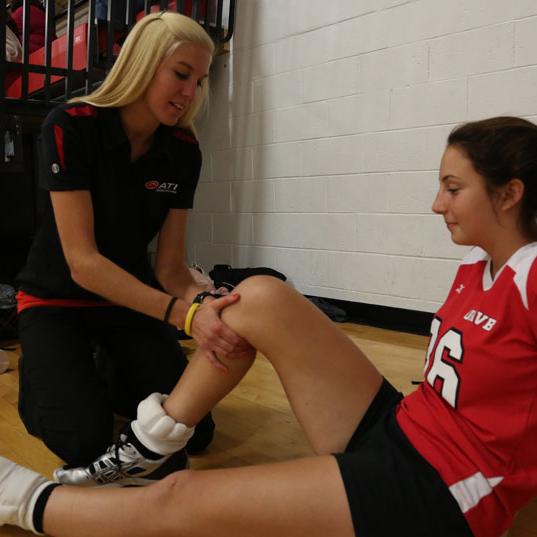
Sometimes it’s a sudden pop, other times it’s a gradual onset of pain. Whether it’s an acute injury or a chronic one, it can be quite a journey for an athlete to recover from an injury and fully return to sport.
Doug Adams, a physical therapist and a board certified sports specialist at ATI North Wilmington, offers advice on knowing when you’re ready to return to sport and dealing with the psychological components of that return.
“When dealing with an injury, our goal is always to get an athlete back as quickly and as safely as possible,” Doug says. “However, there are a lot of factors that play into that.”
Because there is no single test or measure to determine if an athlete is ready to return, athletes must complete a series of comprehensive tests and drills to determine their level of readiness.
“It’s all a process,” Doug says. “When you consider return to sport, you must have a thought-out process that protects the athlete and provides criteria for progression. Ultimately, we want to get them as close to a game-like situation as possible under our supervision before we fully return them.”
Although specific exercises vary from sport to sport, ATI has created return to play progressions following a general six-step progression to safely return athletes to sport:
- Acute rehab and light general conditioning
- Sports-specific strengthening and moderate general conditioning
- Heavy general conditioning and non-contact skill work
- Controlled light contact
- Scrimmage
- Full return to sport
It can take an athlete days, weeks, or months to complete this progression, Doug says.
“An athlete must meet all criteria from one level prior to starting the next level of progression,” Doug says. “If an athlete experiences symptoms at any level, they need to stop at that level or even regress to a previous level before progressing again.”
Although the process may seem slow to an athlete who’s ready to get back to the game, it’s essential to make a gradual progression.
“The biggest mistake athletes make is that as soon as they feel good, they start playing and therefore reinjure themselves,” Doug says. “I often tell them they can miss one more game and play the next five, or they can choose to play this one and miss the next two or three.”
Even if an athlete is physically ready to return to sport, there’s a mental aspect of readiness to consider as well.
“The mental aspect is hugely important,” Doug says. “If an athlete isn’t confident in their ability to play again, they’ll often hesitate in a game situation, which can put them at greater risk for injury. We don’t want that.”
To help build confidence, Doug suggests that physical therapists, athletic trainers, or other medical staff talk to their athletes to identify what their fears are and come up with solutions to combat them. For example, if an athlete with an injured knee is scared to jump, the physical therapist can spend time to make sure they are jumping with proper form and gradually progress them to increasingly difficult jumping tasks to improve their confidence.
“It’s important to make sure the athlete is totally ready to return to the game,” Doug says. “When an athlete is both physically and mentally ready, they’re less likely to experience another injury, and that’s our goal. The number one risk factor for an injury is a previous injury, which tells us that we (as healthcare providers) need to do all that we can to make sure they are ready in all aspects prior to returning to sport.”
